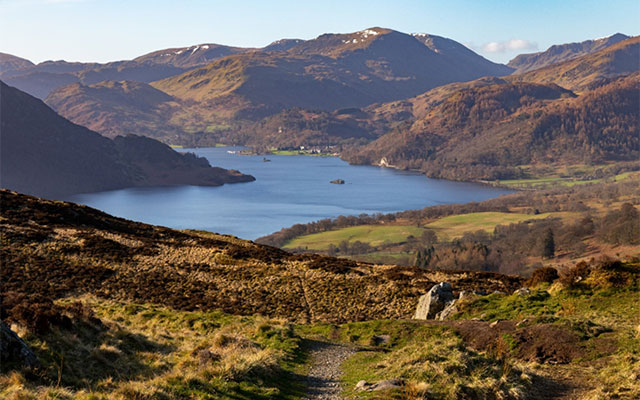Discovering Cumbria: A Comprehensive Review

Cumbria, located in the northwest of England, is a county renowned for its stunning landscapes, historic towns, and cultural heritage. This comprehensive article explores Cumbria’s history, geography, economy, culture, notable landmarks, and its significance as a prominent region within the United Kingdom.
History of Cumbria
Cumbria has a rich history dating back to ancient times, with evidence of human habitation from the Neolithic period. The region’s Celtic roots are evident in its early settlements, languages, and cultural traditions. Historically, Cumbria was part of the Kingdom of Strathclyde and later the Kingdom of Rheged, before coming under Anglo-Saxon and then Norman control.
During the medieval period, Cumbria experienced political and territorial shifts, including conflicts between the English and Scottish kingdoms over border territories. The county’s strategic location along the Anglo-Scottish border influenced its history and development, leading to the construction of castles and fortifications such as Carlisle Castle, which played a significant role in defending England’s northern frontier.
In more recent centuries, Cumbria became known for its agricultural economy, with farming, sheep rearing, and mining contributing to its prosperity. The Industrial Revolution brought advancements in mining, quarrying, and textile manufacturing, shaping the county’s industrial landscape and urban growth.
Geography and Demographics
Cumbria is located in the northwest of England, bordered by Scotland to the north, Northumberland to the northeast, County Durham and North Yorkshire to the east, Lancashire to the south, and the Irish Sea to the west. The county is characterized by its diverse landscapes, including the Lake District National Park, Yorkshire Dales National Park, and parts of the North Pennines Area of Outstanding Natural Beauty (AONB).
The population of Cumbria is predominantly English-speaking, with a mix of urban centers and rural communities. Major towns and cities include Carlisle (the county town), Kendal, Barrow-in-Furness, and Penrith, each offering unique historical, cultural, and economic significance.
Economy and Industry
Cumbria’s economy is diverse, supported by various sectors:
- Tourism: The Lake District National Park, a UNESCO World Heritage Site, attracts millions of visitors each year with its scenic beauty, outdoor activities, and cultural attractions such as Beatrix Potter’s Hill Top farm and Wordsworth’s Dove Cottage.
- Agriculture: Agriculture remains an important economic activity in rural Cumbria, with dairy farming, sheep rearing, and crop cultivation contributing to the county’s agricultural output.
- Manufacturing: Cumbria has a heritage of manufacturing, including industries such as aerospace, defense, nuclear energy, and engineering, with major employers like BAE Systems and Sellafield Ltd.
Culture and Heritage
Cumbria boasts a rich cultural heritage and artistic tradition, reflected in its historic landmarks, museums, and vibrant arts scene:
- Literary Connections: Cumbria has inspired renowned writers and poets, including William Wordsworth, Beatrix Potter, and Arthur Ransome, whose works celebrate the county’s natural beauty and rural life.
- Historic Landmarks: The county is home to notable landmarks such as Hadrian’s Wall, a UNESCO World Heritage Site built by the Romans to mark the northern boundary of their empire, and Furness Abbey, a medieval monastery with impressive ruins.
- Arts and Festivals: Cumbria hosts a variety of arts festivals, exhibitions, and cultural events throughout the year, showcasing local talent in music, visual arts, theater, and literature.
Education and Research
Cumbria is home to educational institutions that support its cultural and economic development:
- University of Cumbria: Offers undergraduate and postgraduate programs across campuses in Carlisle, Lancaster, Ambleside, and Barrow-in-Furness, specializing in subjects such as education, health, business, and the environment.
- Further Education Colleges: Provide vocational training and higher education courses in partnership with local industries, supporting skills development and employment opportunities.
Notable Landmarks and Attractions
Cumbria offers numerous landmarks and attractions that highlight its natural beauty, history, and cultural significance:
- Lake District National Park: Known for its glacial lakes, rugged mountains, and picturesque villages, offering hiking, boating, and scenic drives amidst stunning landscapes.
- Carlisle Cathedral: A medieval cathedral with a rich history and impressive architecture, including stained glass windows and a beautifully carved choir screen.
- South Lakes Safari Zoo: Home to a diverse collection of exotic animals, offering educational tours and wildlife conservation initiatives.
Events and Festivals
Cumbria hosts a range of events and festivals that celebrate its heritage, culture, and community spirit:
- Keswick Mountain Festival: A celebration of outdoor activities, including hiking, cycling, and water sports, with guided walks, talks, and live music performances.
- Kendal Mountain Festival: A gathering of outdoor enthusiasts, filmmakers, and adventurers, featuring films, lectures, and exhibitions on mountain culture and exploration.
- Carlisle Pageant: A historical reenactment and community festival celebrating Carlisle’s heritage with parades, performances, and medieval-themed activities.
Sustainability and Conservation
Cumbria is committed to sustainability and conservation initiatives, with efforts focused on preserving its natural landscapes, promoting renewable energy sources, and protecting biodiversity through national parks, nature reserves, and environmental stewardship programs.
Conclusion
Cumbria captivates residents and visitors alike with its breathtaking landscapes, rich history, and vibrant cultural scene. From its ancient origins and medieval heritage to its modern industries and outdoor pursuits, Cumbria offers a blend of tradition, innovation, and natural beauty that defines its unique character within the United Kingdom. Whether exploring the Lake District’s fells, discovering historic castles, or participating in local festivals, Cumbria invites discovery and appreciation of its timeless charm and enduring legacy as a region of cultural and natural significance in England’s northwest.




